The Japanese kimono is an iconic part of Japan’s culture, dating back several hundred years, with a rich history, and in different variations such as the Nagagi and Haori for males, and the Tomesode and Furisode for females.
Do Japanese People Still Wear Kimonos?
At one point in time, the Kimono was worn all the time. But now they are mainly used for special occasions such as summer festivals, weddings, funerals, and tea ceremonies.
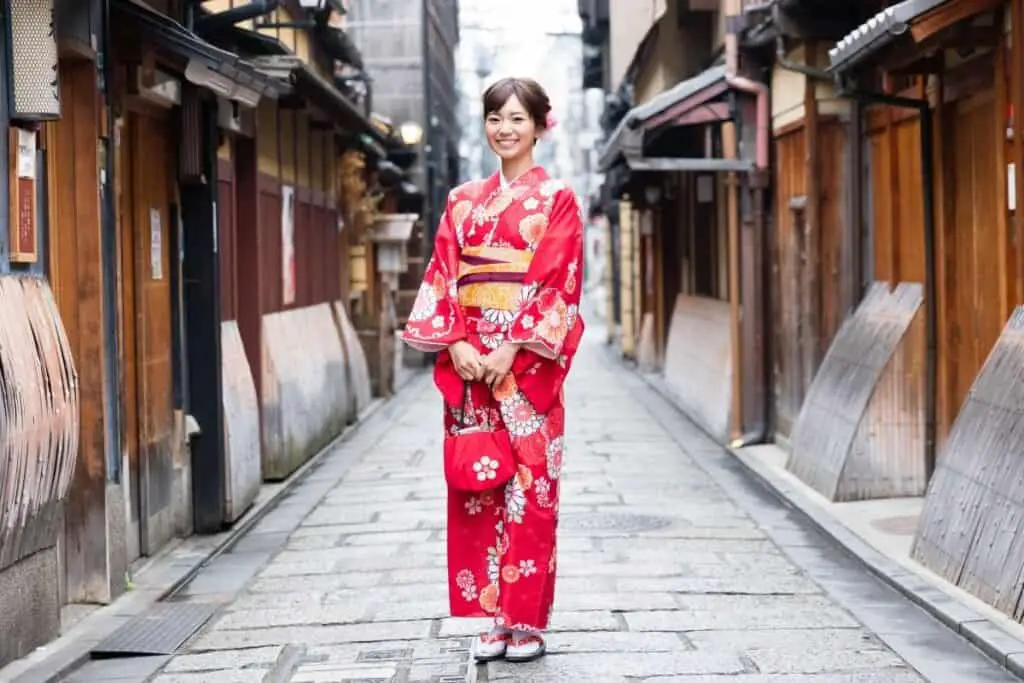
Why do Japanese Wear Kimonos
“Kimono” means “clothing” in Japanese, so the Kimono was just the style of garment everyone wore. They were also practical garments that could be worn in layers to protect against the cold, and made in thin material such as linen in the summer weather season.
What is the Japanese Kimono History?
The kimono started out in the Heian period as a practical, one-size-fits-all garment where the material would be cut in a straight line. That meant the kimono maker didn’t have to tailor the size of the kimono to any specific body—the kimono had the ability to fit anyone.
During the Edo period (1603-1868), the country was divided by feudal domains ruled by lords.
The samurai of each domain could be recognized by the color and pattern of their uniform, which consisted of a kimono, a sleeveless garment worn over the kimono called a kamishimo, and a hakama.
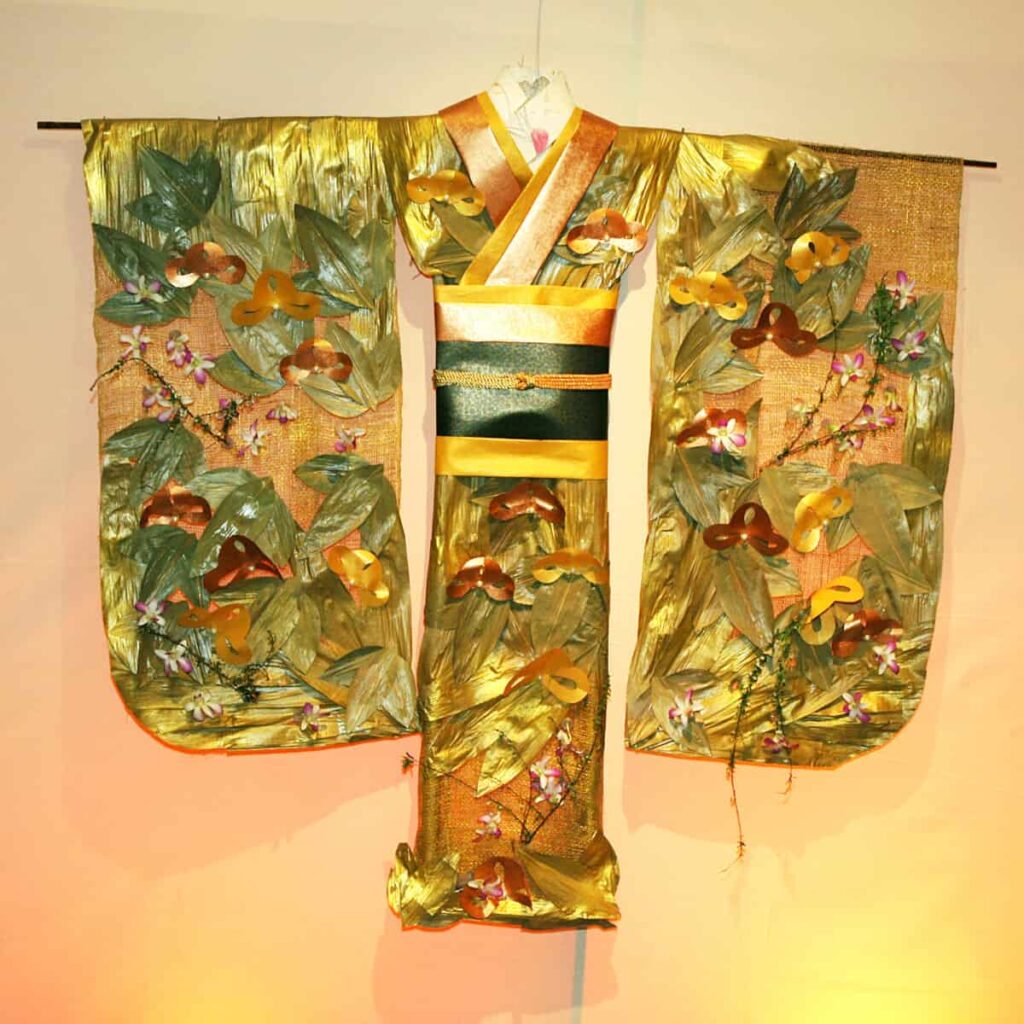
With many samurai needing uniforms, and more importantly, kimonos, kimono-makers had the work and demand needed to perfect their craft.
Kimonos became so valuable that families began treating them as heirlooms, with parents handing them down to their children.
The popularity of Western clothing grew in Japan during the Meiji period (1868-1912) as government and military personnel was required to wear Western clothing for formal functions (it was a law that is no longer required in modern-day Japan.)

For regular citizens, kimonos were required to display the wearer’s family crest, identifying the wearer’s family background at formal events. Kimonos opted for Western clothing in everyday practical life.
How Have Kimonos Influenced Global Fashion?
It is becoming more common to see the style of the Japanese kimono woven into fashion concepts around the world, especially with the iconic sleeve length and size.
Old kimonos have also been repurposed into wedding dresses in a way to include old tradition while modernizing wedding functions.
The kimono isn’t changed in a permanent way as the sleeves are simply folded down and tied at the back to transform the kimono into a wedding dress.
What is the Symbolism in Kimonos?
Kimonos are incredibly symbolic, with meaning woven into the pattern, color, material, and any accessories paired with it.
These aspects denote who the wearer was, what their family background was, and their preferences. The style could also denote a person’s social status.
Beyond personal preference, a kimono’s pattern holds a lot of significance. Simple patterns such as flowers or whole landscapes can hold their own individual meaning.
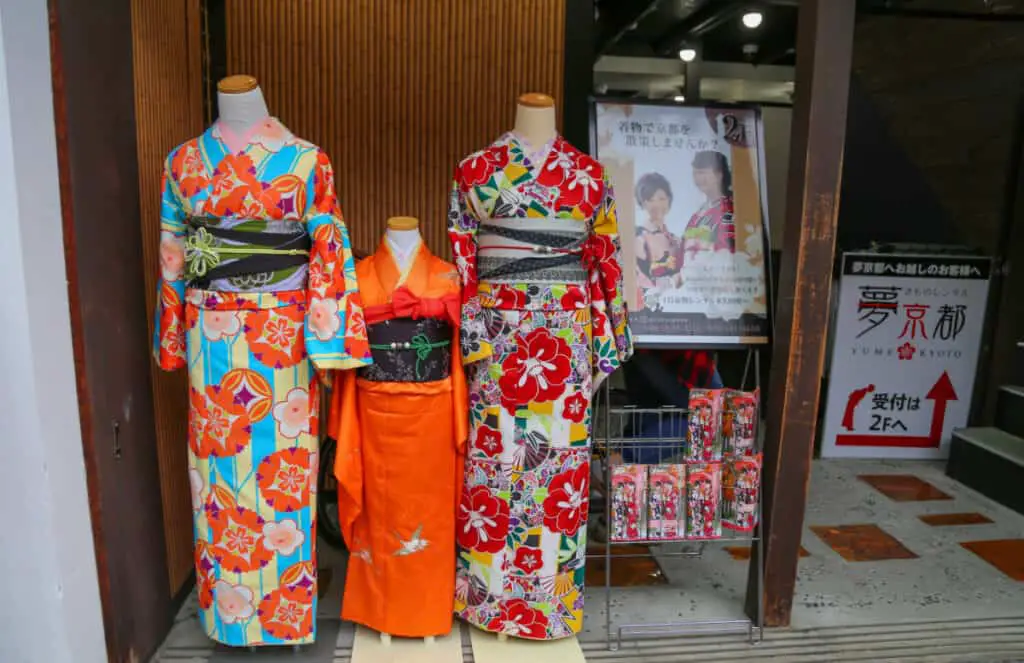
A common symbol is a crane, a special animal in Japan that they symbolize to represent longevity and good fortune. This is based on the crane’s legend that it has a lifespan of a thousand years.
The mandarin duck is also a prominent symbol in Japanese culture and is often depicted on kimonos, especially kimonos for wedding functions. The mandarin duck symbolizes love, fidelity, and happiness in married life.
Wave patterns and crests are said to symbolize tranquility and the desire for a peaceful life.
Oftentimes, the colors picked out in making a kimono have a relevant connection to nature, as the dyes used in the cloth are considered to still be connected to nature, and their attributes tie over into the new cloth.
What are Kimonos Made of?
Traditionally, kimonos can be made up of the following material:
- Hemp.
- Linen.
- Silk.
- Silk brocade.
- Silk crepes.
- Satin weaves.
In the modern age, kimonos are widely accessible in easy-to-care-for fabrics such as:
- Rayon.
- Cotton.
- Polyester.
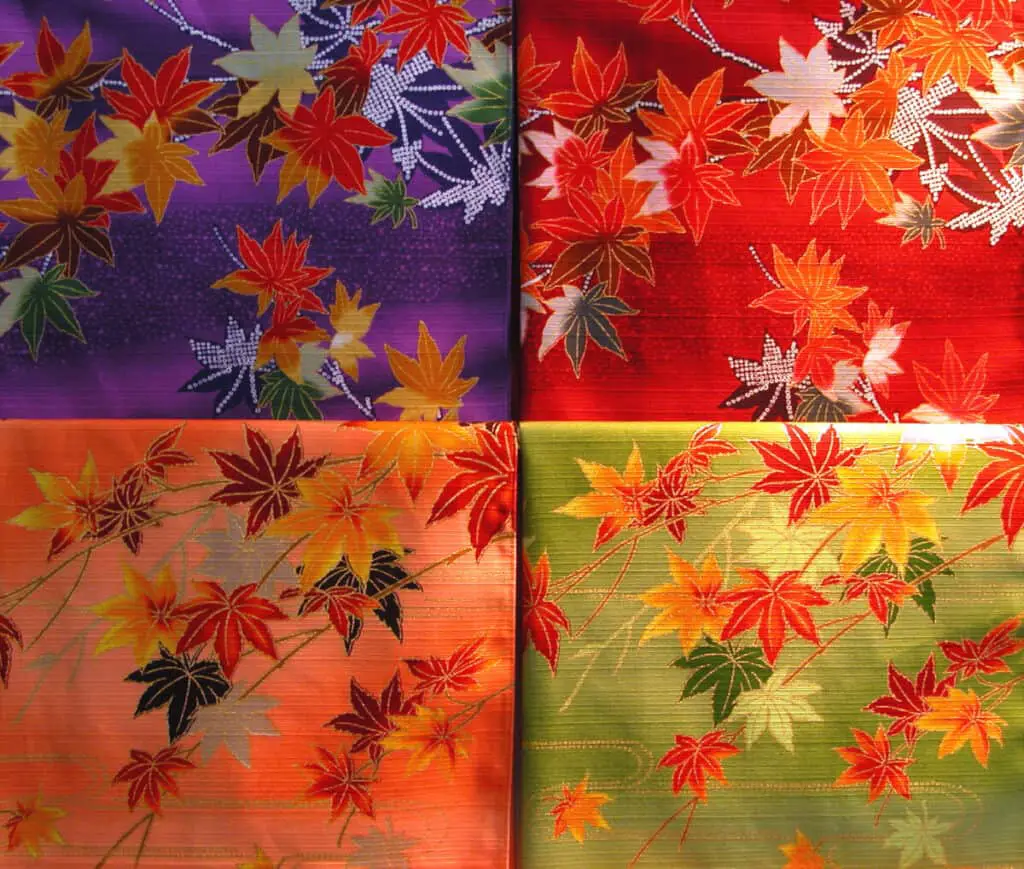
What Types of Kimonos are there in Japan?
Nagagi, Haori, and Hakama are a set of formal traditional Japanese clothing made for males to wear. The Nagagi was the kimono-style part of the set, and the Hakama and Haori were used as layers on top to create more formality or show signs of a higher rank.

The full set is used for special events such as weddings.
Females also have many types of kimonos, such as the Tomesode, worn by married women, and the Furisode, worn by unmarried women. The Furisode is an iconic, long-sleeved kimono with sleeves hanging down to the ankles or calves.
When it comes to the Hakama, many females like wearing this garment as a part of their graduation outfit. However, it can be worn by both genders and is a staple garment for people who work at shrines.
Hakama are also used by people who participate in kendo, martial arts, and calligraphy.
Homongi is known in English as ‘visiting clothes’ and is used as a casual kimono for females. There is no difference in the style if they are married or unmarried.

The Mofuku is a type of kimono used for formal wear at a funeral ceremony or Buddist memorial service.
There are also the Jinbei and the Yukata, which can cost between ¥10,000 ($86.77 USD) and ¥30,000 ($260.32 USD), and are often the go-to choice for summer festivals.
What is the Difference Between the Yukata and the Kimono?
The main difference between the Yukata and the Kimono is in their different types of collars. Kimono collars are soft collars with full width. Yukata collars are half-width collars and made of more sturdy material. Kimonos also have two collars, while yukatas have one.
There is also a difference in the sleeve length. The sleeves of a kimono vary due to the occasion. If the female is unmarried, the sleeves remain long. And if the occasion is solemn, the sleeves also remain long.
Yukata sleeves, however, are always short and will not use sleeves that are longer than 20 inches.
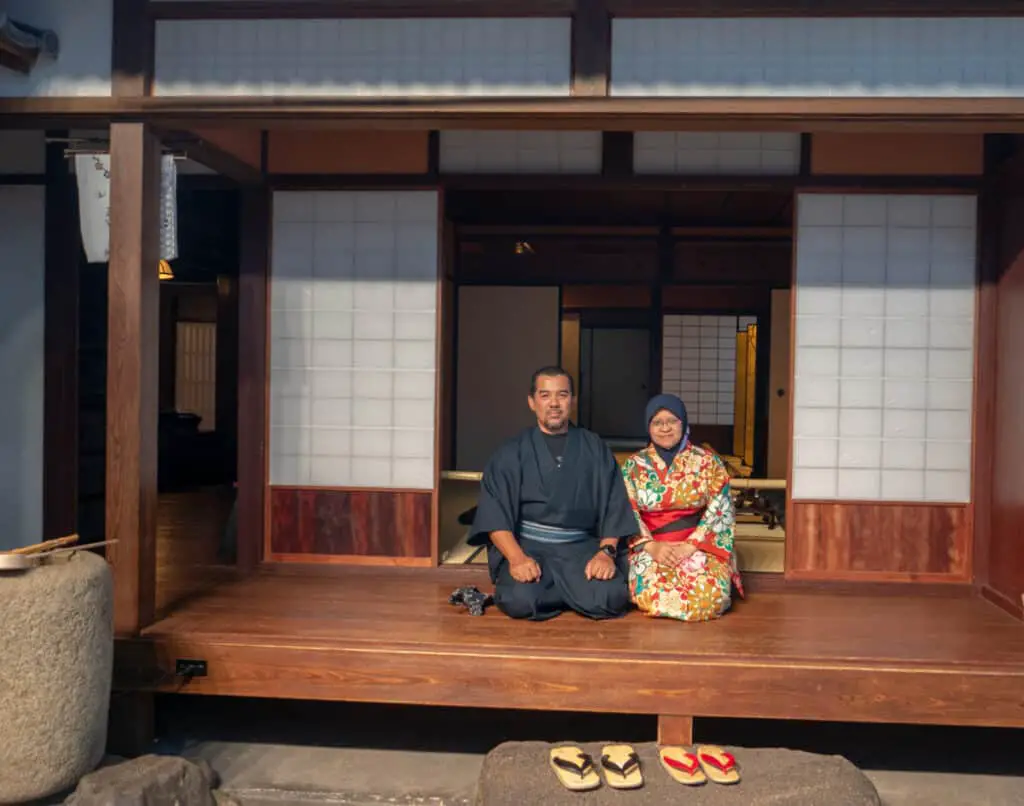
The material also differs between these two garments. Kimonos favor the use of silk and silk brocade as it is seen as a more luxurious and aesthetic material. Yukatas are normally made of cotton or polyester, making them less expensive.
The occasion also plays a role in when kimonos or yukata are worn. Yukata are often seen in the summer months and are a favorite go-to when attending Matsuri of fireworks and other summer festivals.
Kimonos are reserved for formal or special occasions, such as during graduation or religious ceremonies.
Is it Considered Rude to Wear a Kimono By A Foreigner?
Wearing a kimono, done respectfully, is honoring Japanese culture and tradition, and is welcomed in Japan.
How to Wear a Kimono?
You start by wearing the kimono, not pulling the collar tightly when you go to tie it. Take the kimono by about four inches from the ends and gently pull the kimono up so the hem is hanging up above the top of your feet.
This next part is for measurement purposes only: Holding the collar in your left hand, pulling the kimono panel over, wrapping it around your legs, and holding the edge to the right side of your body.
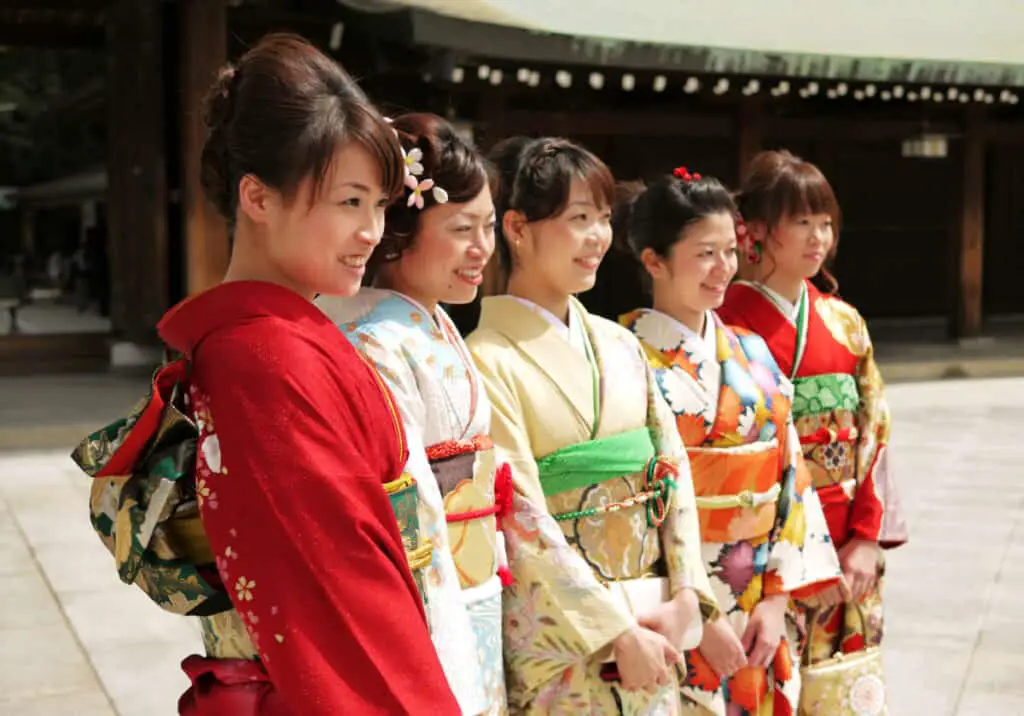
It should measure about three inches higher than the tops of your feet.
When you are satisfied with your measurement, keep your arm at the height you set and unwrap the kimono.
Then, take the right side of the kimono and pull the panel over to your left side, raising the hem at least four to six inches from the tops of your feet.
Hold it there gently, ensuring it does not slip while you re-wrap the left panel of the kimono over top.
If you have wrapped the kimono correctly, the right side will be lifted higher and will not be visible underneath the left kimono panel. That is the correct way to wear a kimono.
Why Does the Kimono Need to be Worn with the Chest Panels Left-Over-Right?
It can be considered very rude to wear the kimono right-over-left as this is how someone who has passed away is dressed (right-over-left kimono panels.)
Always make sure to check how you have worn your kimono or yukata, ensuring it is left-over-right before going out and enjoying all that Japan has to offer.









